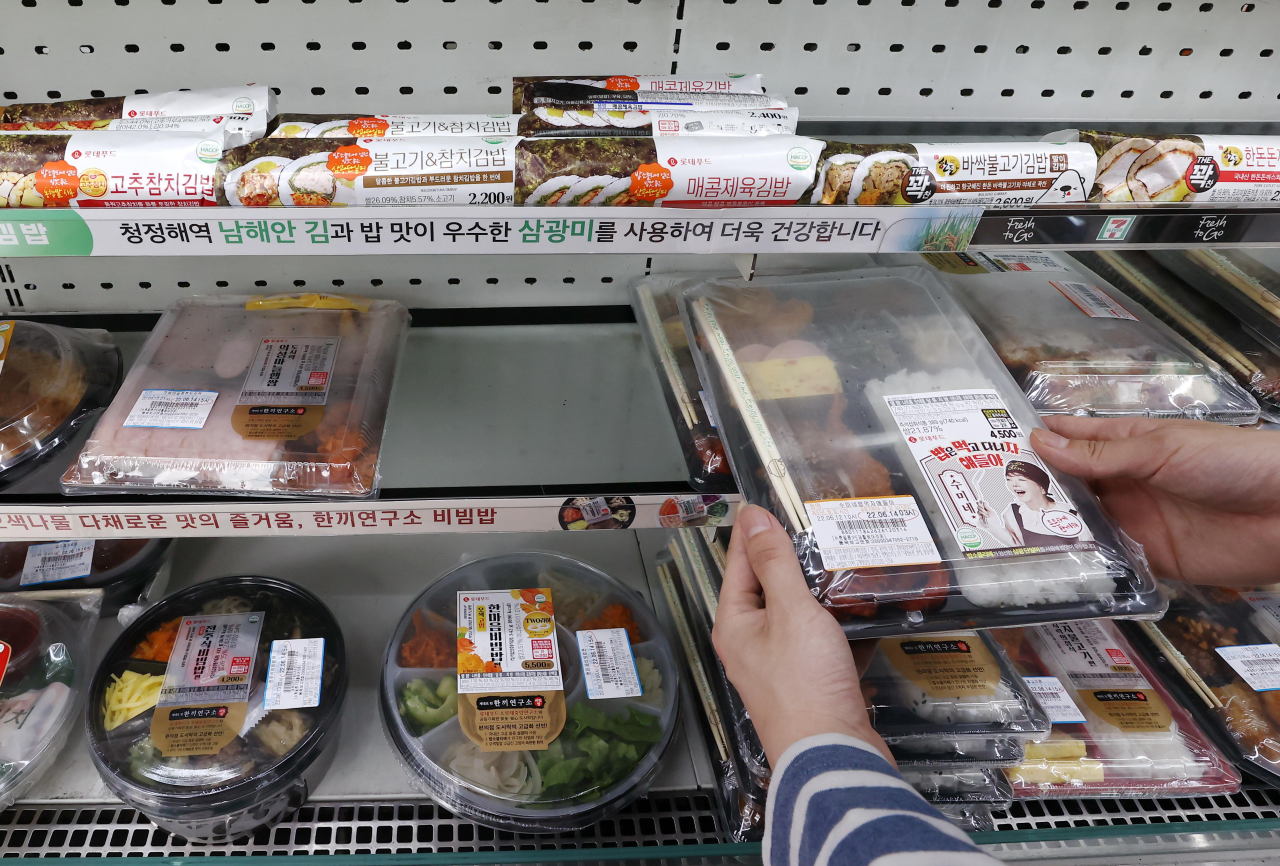Rising ‘lunchflation’ drives Korean workers to look for cheaper options
Surging lunch prices drive some workers back in the office to convenience stores
Published : 2022-06-17 17:01:11

For Kim Sang-ji, a 28-year-old white-collar employee working at a trading company in Seoul, healthy lunch meals had been her usual choice -- until recently. Now, she heads to a convenience store nearby. When picking up a 5,000 won ($3.80) lunchbox or a 2,000 won gimbap roll, she feels unsatisfied. But when thinking about the cost of eating out these days -- particularly in the business district of Gwanghwamun, where her office is located -- plus the extra cost of coffee, she has decided to go on a tight budget given her unchanged salary.
“As more and more local restaurants, who used to sell affordable meals, have increased their prices, it costs more than 10,000-15,000 won to eat lunch around here. Even delivery food costs more as delivery fees are going up,” Kim said.
Kim is one of many workers who have returned to the office after two years of remote working, but feel crunched when paying lunch bills that have risen sharply compared to before the pandemic.
Targeting those experiencing “lunchflation,” convenience store chains are offering an improved meal selection beyond triangular rice balls or cup noodles.
CU sells Jeju onion bulgogi with rice at 3,600 won, and vegan jangjorim bibimbap at 4,800 won. The vegan bibimbap consists of bean-based meat and comes with vegan cola, which is made from caffeine extracted from raw coffee beans.
In partnership with Jongga, a well-known kimchi brand in the country, 7-Eleven offers Jongga yeolmu (young radish) bibim noodles at 4,000 won and Jongga yeolmu bibimbap at 4,800 won.
The bestselling meals sold by GS25 are bulgogi with rice and the sausage and vegetables meal box, each priced at 3,900 won. Emart 24’s most popular lunch boxes are pork cutlet curry with rice and chicken mayo rice, which are sold for 4,500 won and 4,200 won, respectively.
Some convenience stores have even revived cheaper meals, which had been replaced by premium meal selections for the past few years.
CU recently launched a sausage and kimchi with rice meal box, and fish cakes with rice meal box, each priced at 2,900 won. The menu items were developed by Baek Jong-won, a TV chef.
Although such ready meals are cheap, some employees are having mixed feelings about eating convenience store foods.
“It is a relief that I can still find affordable meals, but I feel kind of frustrated at the same time. Under a tight budget, I have to cut down most of my expenses -- even those required for a person to have a decent meal,” said Kim.
According to data from the Korea Consumer Agency, the average price of jjajangmyeon (noodles with black soybean sauce) sold in Seoul in May showed the highest price spike of 9.3 percent to 6,146 won, compared to December last year. Kalguksu, knife-cut flour noodles with broth, ranked second with an 8.6 percent increase and a price tag of 8,269 won in the cited period.
Other menu items that increased in price include gimbap, naengmyeon (cold noodles), bibimbap (rice with mixed vegetables), pork belly, kimchi jjigae (kimchi stew) with rice and samgyetang (ginseng chicken soup).
http://www.koreaherald.com/common/newsprint.php?ud=20220617000540